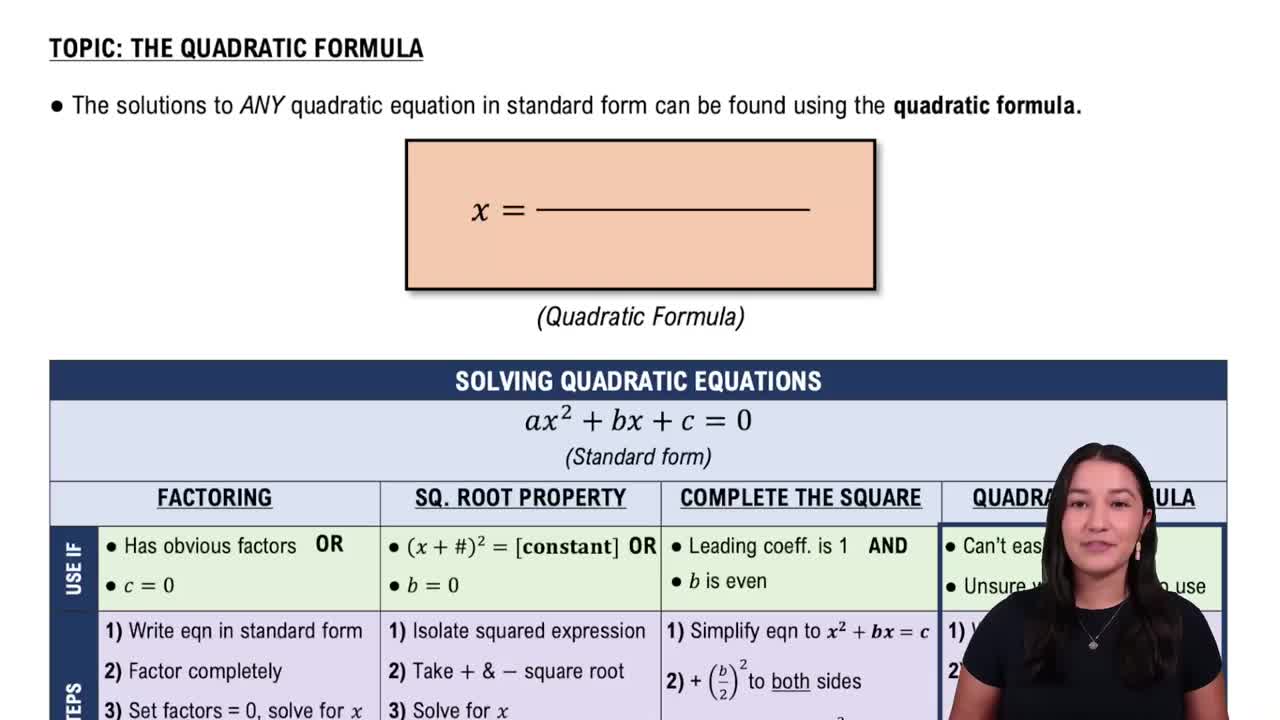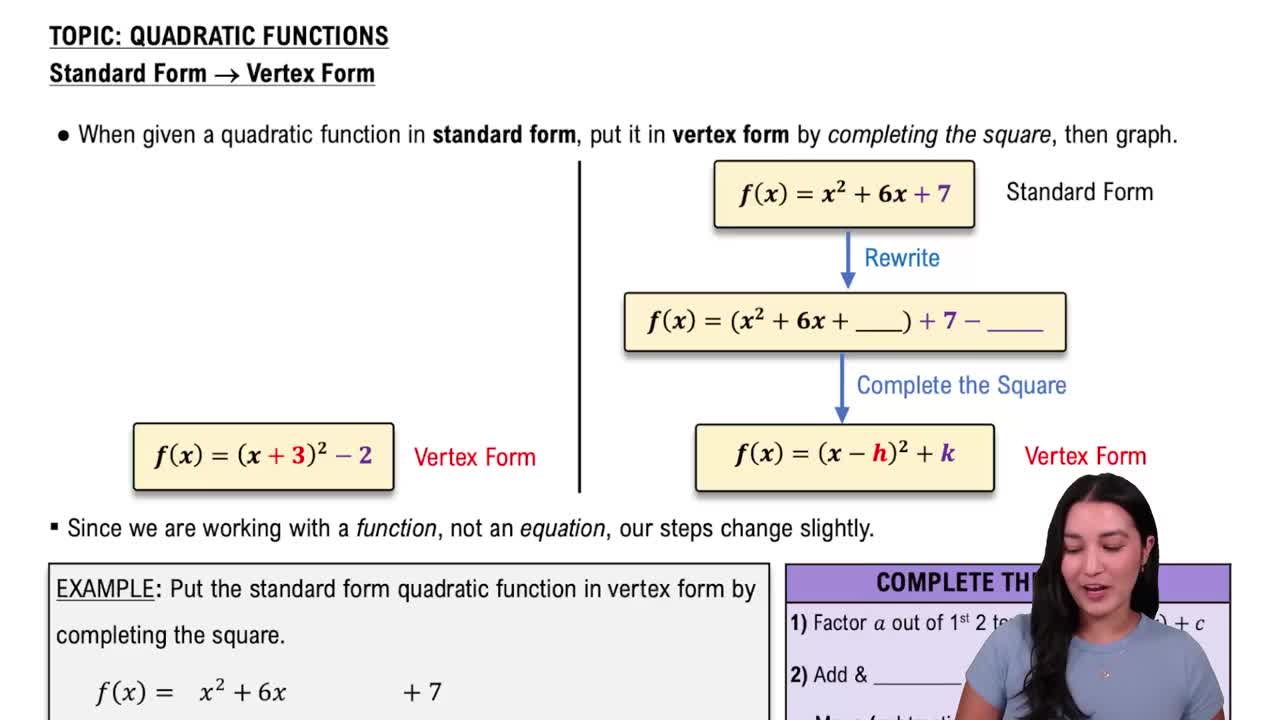Table of contents
- 0. Review of Algebra4h 16m
- 1. Equations & Inequalities3h 18m
- 2. Graphs of Equations43m
- 3. Functions2h 17m
- 4. Polynomial Functions1h 44m
- 5. Rational Functions1h 23m
- 6. Exponential & Logarithmic Functions2h 28m
- 7. Systems of Equations & Matrices4h 6m
- 8. Conic Sections2h 23m
- 9. Sequences, Series, & Induction1h 19m
- 10. Combinatorics & Probability1h 45m
4. Polynomial Functions
Quadratic Functions
Problem 7c
Textbook Question
Solve each problem. During the course of ayear, the number of volunteers available to run a food bank each month is modeled by V(x), where V(x)=2x^2-32x+150 between the months of January and August. Here x is time in months, with x=1 representing January. From August to December, V(x) is mod-eled by V(x)=31x-226. Find the number of volunteers in each of the following months. January
 Verified step by step guidance
Verified step by step guidance1
Identify the function that models the number of volunteers for January. Since January is between January and August, use the function V(x) = 2x^2 - 32x + 150.
Substitute x = 1 into the function V(x) = 2x^2 - 32x + 150 to find the number of volunteers in January.
Calculate the expression 2(1)^2 - 32(1) + 150.
Simplify the expression by performing the operations: first, calculate 2(1)^2, then subtract 32(1), and finally add 150.
The result of the simplified expression will give the number of volunteers in January.
 Verified video answer for a similar problem:
Verified video answer for a similar problem:This video solution was recommended by our tutors as helpful for the problem above
Video duration:
3mPlay a video:
Was this helpful?
Key Concepts
Here are the essential concepts you must grasp in order to answer the question correctly.
Quadratic Functions
A quadratic function is a polynomial function of degree two, typically expressed in the form V(x) = ax^2 + bx + c. In this case, V(x) = 2x^2 - 32x + 150 represents the number of volunteers from January to August. Understanding how to evaluate quadratic functions is essential for determining the number of volunteers in specific months.
Recommended video:

Solving Quadratic Equations Using The Quadratic Formula
Function Evaluation
Function evaluation involves substituting a specific input value into a function to find its output. For example, to find the number of volunteers in January, we substitute x = 1 into the quadratic function V(x). This process is crucial for solving the problem and obtaining the correct number of volunteers for each month.
Recommended video:

Evaluating Composed Functions
Piecewise Functions
A piecewise function is defined by different expressions based on the input value. In this scenario, V(x) is modeled by a quadratic function from January to August and a linear function from August to December. Recognizing how to work with piecewise functions is important for understanding the changes in the number of volunteers over the specified months.
Recommended video:

Function Composition

 7:42m
7:42mWatch next
Master Properties of Parabolas with a bite sized video explanation from Callie
Start learningRelated Videos
Related Practice













